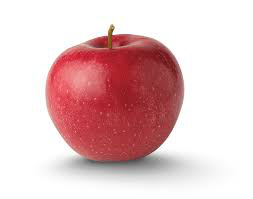OpenCV – Alpha blending and masking of images
Last Updated :
03 Jan, 2023
Alpha blending is the process of overlaying a foreground image on a background image.
We take these two images to blend :

gfg.png

apple.jpeg
Steps :
- First, we will import OpenCV.
- We read the two images that we want to blend.
- The images are displayed.
- We have a while loop that runs while the choice is 1.
- Enter an alpha value.
- Use cv2.addWeighted() to add the weighted images.
- We display and save the image as alpha_{image}.png.
- To continue and try out more alpha values, press 1. Else press 0 to exit.
Python3
import cv2
img1 = cv2.imread('gfg.png')
img2 = cv2.imread('apple.jpeg')
img2 = cv2.resize(img2, img1.shape[1::-1])
cv2.imshow("img 1",img1)
cv2.waitKey(0)
cv2.imshow("img 2",img2)
cv2.waitKey(0)
choice = 1
while (choice) :
alpha = float(input("Enter alpha value"))
dst = cv2.addWeighted(img1, alpha , img2, 1-alpha, 0)
cv2.imwrite('alpha_mask_.png', dst)
img3 = cv2.imread('alpha_mask_.png')
cv2.imshow("alpha blending 1",img3)
cv2.waitKey(0)
choice = int(input("Enter 1 to continue and 0 to exit"))
|
Outputs:

alpha = 0.8

alpha = 0.5
Alpha masking:
We can create a black and white mask from an image with a transparent background.

Python3
import cv2
im = cv2.imread("spectacles.png", cv2.IMREAD_UNCHANGED)
_, mask = cv2.threshold(im[:, :, 3], 0, 255, cv2.THRESH_BINARY)
cv2.imwrite('mask.jpg', mask)
|
Output:

Share your thoughts in the comments
Please Login to comment...